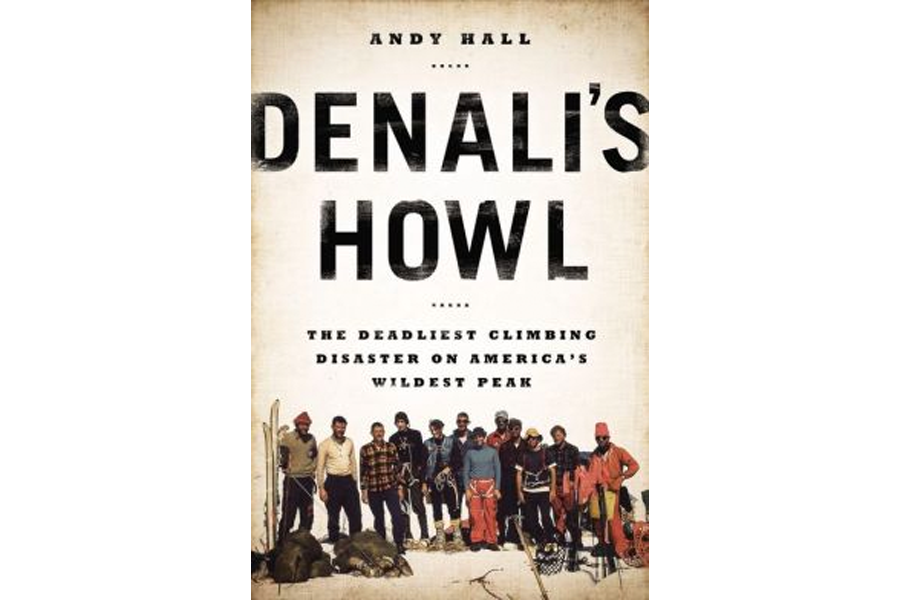'Denali's Howl' author Andy Hall discusses one of the worst climbing accidents in American history
Loading...
Back on the mainland, the Summer of Love was getting into full swing. But the 12 young men at the base of Alaska's Mt. McKinley were far away from the land of hippies in more ways than one. They had adventure and accomplishment on their minds as they looked up at the mountain known as Denali – "The High One."
Only five of the men would make it home from North America's highest peak. A devastating storm on the top of the mountain killed the rest in a disaster that remains one of the worst in the history of climbing in the United States.
Andy Hall, an Alaska journalist, was just 5 when the accident happened. He remembers because he was with his dad, a park service official at Mt. McKinley. The two drove to the mountain in the immediate wake of the tragedy and stopped near a creek. There they ran into a grizzly bear – a moment seared into Hall's memory – and a mountain climber who grinned at him.
Now, Hall explores mysteries both big (why did the disater happen?) and small (who was that mountaineer?) in his new book Denali's Howl: the Deadliest Climbing Disaster on America's Wildest Peak.
The book is a gripping window into a grittier and more dangerous mountaineering era than readers encounter in books like "Into Thin Air" and "Buried in the Sky."
These climbers, all in their 20s and early 30s, lacked the technology that mountaineers use today. But they also weren't burdened by wealthy urbanites looking for an adventure. For better and worse, they had to rely on themselves on a mountain that few dared to summit.
In an interview, Hall talks about the motivations of the climbers, the evolution of mountaineering, and the resolution of the blame game.
Q: What was it like to be a mountaineer in 1967, before the days of GPS, sturdier equipment, and highly-paid guides?
A: I don't know if there's a better word to describe it than rustic. [Expedition leader] Joe Wilcox says it was the age of self-reliance. Everything they did, they did themselves. They did all the work without a guide, swimming rivers and climbing up to the glacier themselves.
They had information from other climbers and they were going up with a map and a trail and some pretty obvious landmarks. But while they carried CB radios, there were long periods where they weren't able to communicate with anyone in the national park.
Q: What's different today?
A: You have guides with a lot of experience, and that goes a long way toward keeping you safe. But it also allows people with less experience to climb.
A lot of people climbing today have a lot less experience than the Wilcox team did. They rely on the guide and the weather reports and they have very solid communications.
But the inherent risk taken by the climber doesn't change even with all of that. In spite of all those safety precautions, you can still get caught.
Q: Were the men in 1967 more aware of the danger?
Those guys had a much stronger understanding of what the risks were and that they really were going to be out there without a safety net. Today, there are people who don't fully understand that when the weather comes in, the climbing rangers will not climb, the helicopter will not fly, and no one will come and get you until the weather breaks.
Not too long ago, I saw a guy teaching another guy how to put crampons on at the bottom of the mountain. And they're heading up. It's a bit late for that elementary of a lesson.
Q: Is the weather still as much of a risk today as it was in 1967?
A: Storms still come. There's a lot of wet moist air that exists on the south side of the mountain and comes from the Bering Sea. The Alaska range acts like a big dam, so a lot of times, weather will be caught on the south side of the range and that moist air is pushed up that mountain.
Within 15 to 20 minutes, the air goes from clear to white because water in the air condenses as it pushes up against the mountain, which remains cold year-round.
Q: Deaths continue on Mt. McKinley, and this year has been an especially deadly one on Mt. Everest and Mt. Rainier. What drives people to take on so much risk?
A: Sir Edmund Hillary said, "I climb because it's there." It's hard to get more specific than that.
There are guys who climb because they know that the decisions they make are life-and-death. They have to make very careful decisions of consequence, and that gives them a feeling that they're in control of their lives. You're putting yourself in a place where you have to be able to rely on yourself.
You also totally zone in on what you're doing and everything else isn't important anymore. It's all about the moment, how placing this tool makes a difference.
Q: Who or what is ultimately responsible for the accident?
A: I was looking for someplace or something where the mistake was made: That's what killed them.
What I ultimately decided was that you can't deconstruct every bad thing that happens to you and say, "That's what I shouldn't have done." I don't think there was one thing. Ultimately, they were in the wrong place at the wrong time.
So do you live your life not taking any risks because there's a chance something could go wrong? You have to weigh the risks and understand that things can go badly and be as prepared as you can."
Randy Dotinga is a Monitor contributor.







